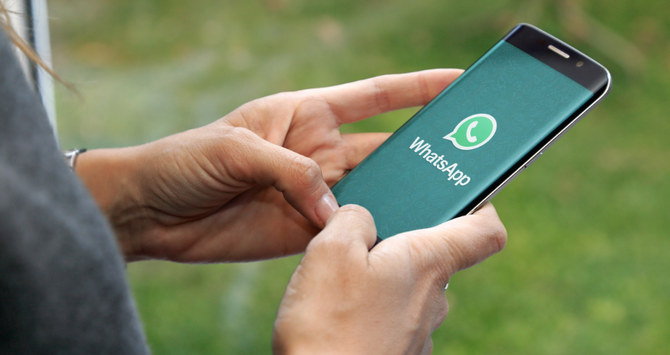After infection with SARS-CoV-2, antibodies protect most healthcare workers from reinfection for up to 6 months, results of the first prospective study of the subject reveal.

Dr David Eyre
The main message for healthcare workers is, "if you've had COVID, at least in the short term, you are unlikely to get it again," David Eyre, senior author, associate professor at the Big Data Institute and infectious diseases clinician at the University of Oxford, Oxford, United Kingdom, told Medscape Medical News.
Eyre and colleagues assessed for the presence of two antibodies to SARS-CoV-2 among 12,541 healthcare workers in the United Kingdom, including about 10% who had a history of polymerase chain reaction (PCR)–confirmed infection. Of those, 223 who did not have antibodies tested positive on PCR for the virus during 31 weeks of follow-up; two participants who did not have antibodies at baseline tested positive.
The study was published online today in The New England Journal of Medicine.

Dr Mark Slifka
"It's great news because there have been so many questions regarding whether or not you can be protected against reinfection, and this healthcare worker study is really an elegant way to address that question," Mark Slifka, PhD, told Medscape Medical News when asked to comment on the findings.
Although "there are millions of people in the US who have been infected with COVID, we don't know how common reinfection is," said Slifka, a researcher at the Oregon National Primate Research Center and professor at Oregon Health Sciences University School of Medicine, Portland, Oregon.
The likelihood of a subsequent positive PCR test result was 1.09 per 10,000 days at risk among those without antibodies, compared with 0.13 per 10,000 days among those with anti-spike antibodies.
The investigators also assessed for the presence of anti–nucleocapsid IgG antibody titers. They found a significant trend for increasing PCR-positive test results with increasing antibody levels. Similar to the anti-spike antibody findings, 226 of 11,543 healthcare providers who did not have anti–nucleocapsid IgG antibodies subsequently tested positive on PCR; by contrast, two of 1172 participants who did not have antibodies tested positive. Adjusted for age, sex, and calendar time, this finding translates to a 0.11 incidence rate ratio (0.13 per 10,000 days at risk; 95% CI, 0.03 – 0.45; P = .002).
"This is a study a number of us have been trying to do," said Christopher L. King, MD, PhD, professor of pathology and associate professor of medicine at Case Western Reserve University School of Medicine, Cleveland, Ohio.
"To really follow a group like this longitudinally like they've done, with a large population, and to see such a big difference ― it really confirms our suspicion that those who do become infected and develop an antibody response are significantly protected from reinfection.
"What's great about this study is it's nearly a 10-fold reduction in risk if you've recovered from COVID and have antibodies," said King, who was not involved with the research. "That's what a lot of us have been wanting to know."
Unanswered Questions Remain
"How long this immunity lasts, we don't know," King said. He predicted that antibody protection could last a year to a year and a half. The duration of protection could vary. "We know some people lose their antibodies pretty quickly, and other people don't," he said.
Slifka said the suggestion of "a substantially reduced risk for at least 6 months...is great news, and the timing couldn't be better, because we're rolling out the vaccines."
Interestingly, not all antibody responses are alike. For example, data indicate that antibody levels following immunization with the Pfizer/BioNTech or Moderna vaccines are higher on average than those of people who've had a natural infection, King said. He added that initial data on the AstraZeneca COVID-19 vaccine in development showed lower antibody levels compared with natural immunity.
The Centers for Disease Control and Prevention recommends immunization for those with a history of infection. "People who have gotten sick with COVID-19 may still benefit from getting vaccinated," the CDC notes on its Facts About COVID-19 Vaccines website. "Due to the severe health risks associated with COVID-19 and the fact that re-infection with COVID-19 is possible, people may be advised to get a COVID-19 vaccine even if they have been sick with COVID-19 before," the CDC states.
The agency also notes that people appear to become susceptible to reinfection approximately 90 days after onset of infection. However, the new evidence from the UK study that persons have up to 6 months of immune protection might lead to a modification of recommendations, especially at a time when vaccine supplies are limited, Slifka said.
Another unanswered question is why the two study participants with antibodies subsequently tested positive for reinfection. "There are a lot of things that could have made these people more susceptible," King said. For example, they could have been heavily exposed to SARS-CoV-2 or been immunocompromised for another reason.
Furthermore, the immune response involves more than antibody levels, King noted. Research in rhesus monkeys suggests that T cells play a role, but not as prominent a part as antibodies. "What I think is protecting us from infection is primarily the antibodies, although the T cells are probably important. Once you get infected, the T cells are probably playing a more important role in terms of whether you get very sick or not," he said.
Multiplication + Addition = More Protected?
The 90% natural immunity protection in the study approaches the 95% efficacy associated with the Pfizer and Moderna vaccines, Slifka noted. Even without immunization, this could mean a portion of the US population is already protected against future infection.
Furthermore, the CDC estimates that there are about 7.7 cases of COVID-19 for every case reported.
As of September 30, the CDC reported that there were 6,891,764 confirmed cases. The agency estimated that overall, approximately 53 million people in the United States have been infected. More recent numbers from Johns Hopkins University School of Medicine's Coronavirus Resource Center indicate that there were 18.2 million cases in the United States as of December 22. If that tally is multiplied by 7.7, the total number protected could approach 140 million, Slifka said.
"That could really be a boost in terms of knocking this pandemic down in the next couple of months," Slifka said.
"Now, if we were to modify the current recommendations and briefly defer vaccination of people with confirmed cases of COVID-19 until later on, we could start reaching herd immunity pretty quickly," he added.
Real-Life Implications
"There is no such thing as 100% protection, even from the infection itself. So when you're dealing with someone with possible exposure to COVID-19, you still need to follow the proper precautions," Slifka said.
Nonetheless, he said, "This is great news for those on the front lines who are wondering whether or not they would have any protection if they had COVID-19 before. And the answer is yes ― there is a very good chance they will have protection, based on this quite large study."
One limitation of the study is that the population consisted predominantly of healthy adult healthcare workers aged 65 years or younger. "Further studies are needed to assess post-infection immunity in other populations, including children, older adults and persons with coexisting conditions, including immunosuppression," the researchers note.
Eyre plans to continue following the healthcare workers in the study, some of whom have been vaccinated for COVID-19. This ongoing research will allow him and coinvestigators to "confirm the protection offered by vaccination and investigate how post-vaccine antibody responses vary by whether you have had COVID-19 before or not. We also want to understand more about how long postinfection immunity lasts."
Eyre has received grants as a Robinson Foundation Fellow and NIHR Oxford BRC senior fellow during the conduct of the study. Slifka and King report no relevant financial relationships.
N Engl J Med. Published online December 23, 2020.
Medscape Medical News



















